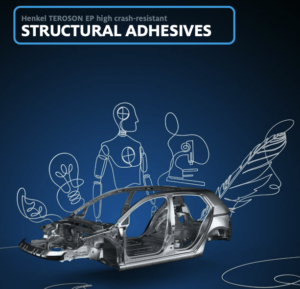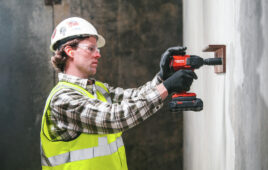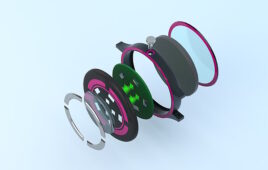Structural adhesives have been used for many years within automotive production to effectively join metal panels. In fact, they’re so popular that in the North American market alone, more than 26 meters is used for each production vehicle.

Along with lightweighting, structural adhesives enable new vehicle architecture, battery assembly, and thermal conductivity. To learn more, download Henkel’s Structural Adhesives white paper here.
But today, they take on new importance due to the rapidly growing battery electric-vehicle (EV) market.
According to chemical manufacturer, Henkel, EVs can weigh two to three times more than their internal combustion engine counterparts, adding 500 to 800 kilograms of weight, depending on car size and mileage range.
Reducing this excess weight is key to helping maximize battery range — an issue of significant relevance in the vehicle consumer market. And while battery energy density is improving, incorporating lightweight metal to offset added BEV weight remains a way to meet this need in the immediate future.
In response, automakers are introducing thinner gauged steel and aluminum substrates, particularly for body components and closures, as they form some of the biggest, heaviest parts of the vehicle.
High, crash-resistant structural adhesives enable automakers to introduce these lightweight metals while ensuring safety and battery protection requirements are met. Along with lightweighting, structural adhesives enable new vehicle architecture, battery assembly, and thermal conductivity.
Structural adhesive toughening chemistry is a key ingredient to achieving high joint strength, structure stiffness, and durable adhesion. It also plays an integral role in terms of up taking oil and dry lube that is present on metals when entering the body shop.
When reviewed in relation to t-peel strength, Henkel’s high crash-resistant structural adhesives can achieve approximately 12 N/mm, compared to OEM requirements of 4-8 N/mm, across cold-rolled steel, electro-galvanized steel, hot-dipped galvanized steel and aluminum. This demonstrates excellent plastic deformation of the substrate in a crash situation.
In terms of impact wedge peel, testing is activated down to temperatures as cold as -40 degrees Celsius and as high as 80 degrees Celsius — reflecting extremes that can happen in different parts of the world. Typically, epoxies are brittle at cold temperatures, making it very difficult to meet crash standards. Toughening chemistries once again take on a key role here, helping the adhesive remain ductile down to extremely cold conditions.
As a result, Henkel’s high crash-resistant structural adhesives can achieve far higher impact wedge peel results than industry standard of 15 N/mm; reaching greater than 30 N/mm on 0.8 mm cold rolled steel and approximately 40 N/mm on 2.0 mm aluminum.
Automakers need solutions providers that not only overcome key challenges but that do so in an efficient and highly predictable manner. In order to speed development and ensure accuracy, Henkel employs state-of-the-art simulation material data input in the development of its structural solutions.
This provides crucial direction to designers in terms of development while increasing confidence in the behavior of car structures in real-life situations.
Learn more here.





Tell Us What You Think!